#coptic hymns
Text
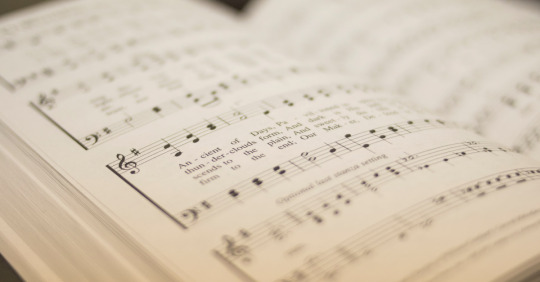
We sing hymns to God. We speak hymns to each other.
#Hymns#orphic hymns#coptic hymns#hymn sing#christmas hymns#homeric hymns#christmas music#christmas carols#carols#o holy night#o come o come emmanuel#christianity#bible study#bible verses#christian music#christian song#christian bible#mytopfinding#church#god#word of god
1 note
·
View note
Text
did i ever tell you guys i was invited to meet pope shenouda in fayyum and perform in front of him when i was a kid but my dad said no LMAO
#i won a coptic language competition and all finalists received invitations to sing coptic hymns for him#dad didn't want me to travel so i was forced tl turn it down :( it was so disheartening that i gave up on yhe language entirely#i have picked it back up recently though :)
25 notes
·
View notes
Text
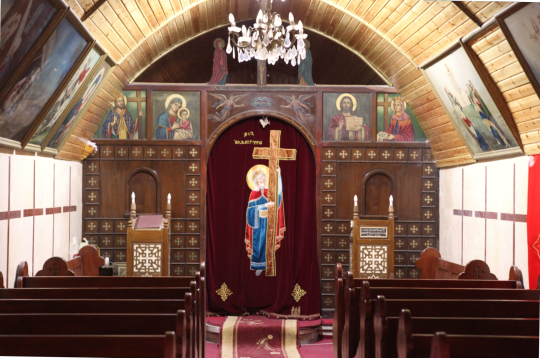
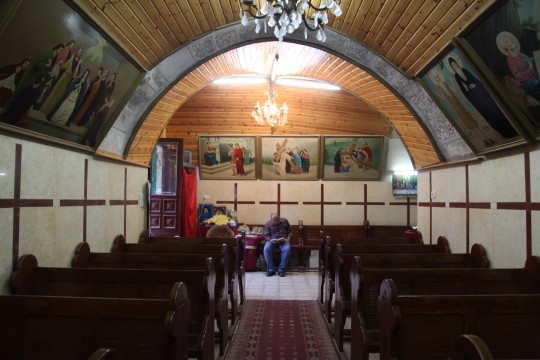
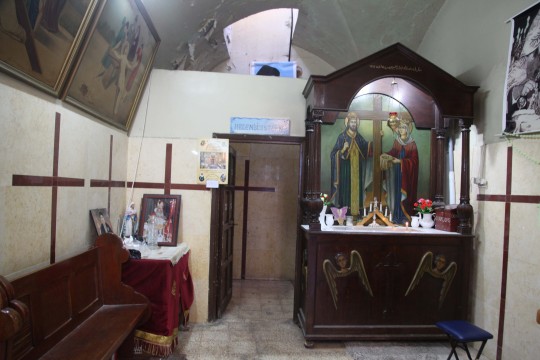
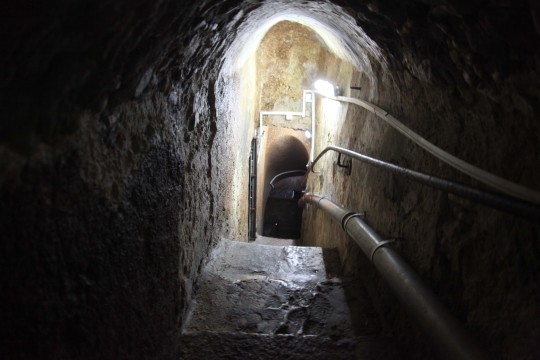

the queen helena coptic orthodox church and cistern, located within the coptic orthodox patriarchate in jerusalem, palestine. this complex was known about from written accounts - water from here was used to build and serve the nearby church of the holy sepulchure. its location is said to have been shown to queen helena by an angel, who told her that it was a roman well buried after past wars.
coptic merchants began to settle in jerusalem during the middle ages, forming the basis of today's thousands-strong palestinian coptic community. though the coptic patriarchate of jerusalem was established in the 13th century, it was only in 1835 when the cistern and the remains of a large, stone-carved church on top of it were excavated. they were then renovated into what they are today. the cistern is known for its acoustics and is sometimes host to the singing of hymns.
#palestine#coptic#architecture#interior#worship#christian#diasporic palestine#my posts#i feel like i post too much of jerusalem but i also just am really interested in stuff relating to diaspora#and jerusalem is where a lot of them went in palestine#hope u guys like caves as much as i do#and if not too bad
18 notes
·
View notes
Text
May 11, 2023
Earlier today, Pope Francis declared that 21 Coptic Orthodox Christians, who were beheaded by Islamic militants in Libya in 2015, would be added to the Roman Martyrology. Francis made the announcement during an audience with Pope Tawadros II, the leader of the Coptic Orthodox Church of Alexandria. The “21 Coptic New Martyrs of Libya,” as they are called, were martyred on February 15, 2015. Less than a week later, they were declared saints in the Coptic Orthodox Church by Pope Tawadros. The Copts celebrate their feast on the anniversary of their death, February 15, and it appears that this will also be their feast day on the Roman calendar.
The world was shocked in February 2015, when a 5-minute video was uploaded to the internet by ISIS militants. The video showed the 21 kidnapped men in orange jumpsuits being beheaded on a beach near the Libyan city of Sirte. 20 of these martyrs were Egyptian Copts who had gone to Libya to do construction work. The last member of the group, Matthew Ayariga, was a fellow worker from Ghana. It is said that he told the executioners, “Their God is my God. I will go with them.” There has been some question over whether he was already Christian or whether the witness of his 20 coworkers led to his conversion, but nevertheless, his Christian witness and solidarity are inspiring. It was reported that as they died, they chanted hymns and prayed aloud.
The deaths of these men as Christian martyrs is undeniable. The extraordinary photos of Blessed Miguel Pro, a Catholic priest who was executed by the Mexican government in 1927 during the Cristero War — taken just moments before the he was shot by the firing squad — are perhaps the only other photographic images recording a Christian martyrdom as it happened. And yet the recognition of the 21 martyrs as Catholic saints is unprecedented for several reasons.
The primary reason, of course, is that the Coptic Orthodox Church is not in full communion with Rome. The Copts are Oriental Orthodox (as opposed to Eastern Orthodox), because they split from the other Christian churches in the year 451 at the Council of Chalcedon due to differences over the nature of Christ. They are also referred to as “Non-Chalcedonian Orthodox Churches.” This means that they recognize the first three ecumenical councils, whereas the Eastern Orthodox recognize seven, and the Catholic Church recognizes 21 ecumenical councils.
After more than 15 centuries, our hope of reunion may seem remote. After all these years, the two Churches have independently developed their own traditions, theologies, forms of worship, and prayers. Yet some things have remained the same. Both Churches have maintained apostolic succession and the sacraments: Pope Francis is the successor of St. Peter and Pope Tawadros is the successor of St. Mark. In recent decades, the relationship between the Catholic Church and the Coptic Orthodox Church has become closer. For example, in 2017, Popes Francis and Tawadros made a joint statement indicating mutual acceptance of the validity of baptism in both Churches.
Pope Francis has praised the Martyrs of Libya many times, and today he recalled our shared baptism, as well as the blood of martyrs that enriches the Church. He said, “These martyrs were baptized not only in the water and Spirit, but also in blood, a blood that is the seed of unity for all of Christ’s followers.” In the past, the pope has discussed how we must realize that we, the baptized, have much more in common than what divides us. This shared recognition of sainthood between the two Churches is a significant step towards Christian unity.
This sets a new precedent. In 1964, when the Ugandan Martyrs were canonized by Pope Paul VI, St. Charles Lwanga and the other 21 Catholics among his companions were declared saints. The 23 Anglicans who were martyred alongside them were mentioned briefly in the pope’s homily, when he said, “And we do not wish to forget, the others who, belonging to the Anglican confession, met death for the name of Christ.”
Another reason why today’s announcement is unique was that Pope Francis did this by an official act. The Roman Martyrology is the official list of saints officially recognized by the Latin Church. Many Eastern Catholic Churches have their own processes for canonizing saints according to their traditions. Historically, when groups of Eastern Catholics have come into full communion with Rome, they will bring along their saints and prayers and traditions. Many of these saints aren’t officially canonized by Rome, and they are usually only venerated in their own tradition. By inscribing the names of these martyrs in the Roman Martyrology, Pope Francis has made it clear that these martyrs are to be venerated by Roman Catholics as saints.
Finally, in declaring them saints today, Pope Francis sidestepped the typical canonization process. They are saints, without having passed through the usual stages of Servant of God, Venerable, and Blessed. This “skipping” of steps is commonly referred to as “equipollent canonization.” Essentially, when a pope declares someone a saint by an official act, that person is recognized as a saint in the Church. This is not the first time Francis has moved a case along in this way. For example, when he canonized Popes John XXIII and John Paul II in 2014, he waived the requirement of a second miracle for John XXIII so that the two popes would be canonized on the same day. In 2013, he elevated the Jesuit Peter Faber, whose status had lingered at “Blessed” since 1872.
Perhaps the most interesting case is that of St. Gregory of Narek, an Armenian monk venerated as a saint in the Armenian Catholic Church and the Armenian Apostolic Church. Unexpectedly, Pope Francis named him the 36th Doctor of the Church in 2015. Living from in the mid-10th century through the early 11th, St. Gregory lived at a time when the Armenian Church was not in communion with Rome. After several failed attempts at reunion, the Armenian Catholic Church was officially recognized as an Eastern Catholic Church in 1742. Interestingly, the Armenian Catholic eparchy of Buenos Aires (established in 1989 by Pope John Paul II) is called the Eparchy of Saint Gregory of Narek. Perhaps this is how Pope Francis became familiar with the saint.
We Christians are blessed with a wide variety of saints from all sorts of backgrounds. They help make up the beautiful tapestry of the people of God — praying for us, interceding for us, and inspiring us. This is something worth celebrating.
21 Coptic New Martyrs of Libya, Pray for Us!
Mike Lewis. Bolded emphases added.
#Catholicism#Oriental Orthodox Christianity#Christianity#saints#martyrs#Libyan Martyrs#My Pope#Pope Tawadros II#Ugandan Martyrs#Miguel Pro
121 notes
·
View notes
Text
Hidden Christianity: Forgotten Scriptures, Ignored Saints, Misplaced Mystics
"Contend earnestly for the faith once delivered to the Saints." (from the Book of Jude)
The Septuagint Greek translation of the Jewish scriptures, made for the Library of Alexandria, was literally "The Bible" of early Christianity, and it included several additional texts (Apocrypha) not found in other Bibles. A translation of it in contemporary English has been published.
Aramaic Was the Language of the Original Jesus Movement: There are impressive Aramaic-Syriac manuscripts of the New Testament that have been translated into English, and even older Aramaic-Syriac manuscripts of the four gospels. Discover the Peshitta, and the Old Syriac Gospels (Evangelion da-Mepharreshe) from Codex Sinaiticus.
Divine Light in the Dead Sea Scrolls: We next turn our attention to the Dead Sea Scroll discovery of Qumran, and hear selections of hymns (psalms) composed by the enigmatic prophet, who was the founder of this community in antiquity, known only as "The Teacher of Righteousness". Also mentioned is the Book of First Enoch, quoted by Jude in the New Testament, and a popular text at Qumran.
The Psalms of Early Christianity Are Back: The book where the Messiah perhaps for the first time begins to materialize, makes his first literary appearance in the first century A.D., is the Book of the Odes. This mysterious collection of ancient hymns written in Syriac, a dialect of the Aramaic language, has been described as "some of the most beautiful songs of peace and joy that the world possesses." These mystical poems and prayers remind me of Rumi and other Sufi poets. Sometimes I refer to the Odes as 'the would-be book of New Testament psalms', and I find the Odes to be a very spiritual book, one of the finest examples of a "lost book of the Bible" that got misnamed, misfiled and misplaced somewhere along the way. And, yes, it was viewed to be scripture in some places, such as Asia Minor, Syria/Mesopotamia and Egypt.
"The Lord has directed my mouth by His Word:
he has opened my heart by His Light.
He has caused His immortal Life to dwell in me,
and permitted me to speak of the fruit of His peace —
to restore the souls of those who desire to come to Him,
and to lead a good band of captives into freedom."
(Book of the Odes)
"Yeshua said, Come to me, for my yoke is easy and my mastery gentle,
and you will find rest for yourselves." (Gospel of Thomas)
The Author of the Gospel of Luke Said "Many" Had Already Composed Gospels Before He Wrote His: We learn about Sayings Gospel Q, a collection of the sayings of Jesus. Quotes from it were included in several early Christian gospels. We also explore a translation containing over twenty gospels and surviving fragments of gospels from the early centuries A.D.
The Gospel of Thomas, A Wisdom Gospel or Gospel For Contemplative Mystics Seeking A Present-Tense Kingdom of God Here and Now: The Gospel of Didymus Jude Thomas the Twin, a collection of the sayings of Jesus, went missing for almost two millennia until three copies of it were almost miraculously discovered several decades ago: two sections of it written in Greek found at Oxyrhynchus, Egypt, and a more complete edition in the Coptic language discovered near a monastery not far from Nag Hammadi in Upper Egypt buried under the sands of time in a clay storage jar. This important lost book has been found again. Practically predicting it’s own rediscovery the book of Thomas says: "Know what is before your face, and what is hidden from you will be revealed to you. For there is nothing hidden which will not be revealed, nor anything buried which will not be raised." (Saying Five) Also mentioned is the possible inclusion in the Gospel of Thomas of a few sayings of Yeshua from another early Christian scripture known as the Gospel of the Hebrews.
If You Don't Want Your Saints and Mystics, We'll Tak'em! In the West, they might not be known, are not usually quoted, and their names are never spoken. Today we remember a few of the "orphan" saints and "homeless" mystics of Christianity, including those from the almost unknown community called "The Church of the East". Shared are excerpts from the out-of-this-world prayers of Joseph the Visionary.
This Spiritual Awakening Radio podcast includes a list of recommended reading: translations of the scriptures referring to above, anthologies of apocryphal writings, and also mentioned is the book, Disciples, by Keith Akers, a scholarly, rather thorough and impressive documentation of the vegetarianism of the Jesus Movement (Ebionites or Hebrew Christians).
Podcast: Hidden Christianity: Forgotten Scriptures, Ignored Saints, Misplaced Mystics -- Fragments of a Faith Forgotten -- Spiritual Awakening Radio Podcast: https://youtu.be/uMjTEDdllHI
In Divine Love, Light, and Sound,
James Bean
Spiritual Awakening Radio
https://www.SpiritualAwakeningRadio.com
#hidden christianity#christian mystics#christian mysticism#apocrypha#dead sea scrolls#Aramaic#greek#odes of solomon#gospel of thomas#christianity
29 notes
·
View notes
Text

Today in Christian History
Today is Saturday, August 5th. It is the 217th day of the year in the Gregorian calendar; 148 days remain until the end of the year.
1590: Meletius Pegas becomes the Orthodox patriarch of Alexandria. He will endeavor to reunite the Greek and Coptic churches.
1604: John Eliot is baptized in England. His non-conformist views will eventually prompt him to move to America, where he will found fourteen congregations of Indian Christians, translate the Bible into Algonquin, and help prepare the Bay Psalm Book—the first book printed in America. Captured by Indians, he will learn their language while in captivity.
1720: Death in England of Anne Finch, Countess of Winchilsea, a notable poet and hymnwriter, loyal to King James II. Among her best-known religious poems is “The Atheist and the Acorn,” which depicts an atheist as a fool for trying to outguess God’s arrangements. She had also written a praise hymn beginning, “To the Almighty on his radiant throne / Let endless hallelujahs rise.”
1751: Rev. John Cuthbertson, America’s first Scottish Covenanter pastor, arrives in America. His name appears frequently as a genealogical authority because he will keep a log of births and marriages. In it, he records over five thousand family names as well as notes of six hundred marriages and almost two thousand baptisms he performs in the course of seventy thousand miles of ministerial travels.
1833: Allen B. Freeman, a young man recently graduated from a Baptist seminary, arrives to serve as a missionary in Northern Illinois, but will die of cold and exhaustion in December the following year after his horse collapses under him, forcing him to walk many miles back to Chicago.
1835: Death of Thomas McCrie, Scottish minister and church historian. He and three other divines had left the General Association Synod and formed the Constitutional Association Presbytery. He also wrote biographies of John Knox and Andrew Melville.
1844: The first assembly of Queen’s College, British Guiana, meets. The school has been established by Anglican bishop William Piercy Austin, a missionary to the South American colony.
1876: Scottish missionary Mary Slessor boards the SS Ethiopia to sail to Calabar (Nigeria). She shares the ship with a cargo of liquor.
1955: Death of Jesse Irvin Overholtzer, founder and first director of Child Evangelism Fellowship.
4 notes
·
View notes
Photo

The singing of traditional Coptic hymns was a feature when the St Mary and St Pope Kirolos the 6th Church opened at Cundeltown in 2017.(ABC News: Emma Siossian)
#religion#christianity#orthodoxy#oriental orthodox#coptic orthodox#christians#australia#oceania#divinum-pacis
2 notes
·
View notes
Text
Easter, which occurs on the first Sunday after the first full moon following the vernal equinox Is May 5th according to 260,000,000 or so Christians in Armenia, Greece, Russia, Ukraine, Ethiopia, Egypt, Romania, Serbia, Bulgaria, Belarus, Gaza, Egypt, Jerusalem’s Armenian quarter, Georgia, and over the world. These are the churches that predate the Roman Catholic Church.
…and it is also a big day, Cinco de Mayo for Mexican’s celebrating the Mexican victory against the favored French forces in the Battle of Puebla on May 5, 1862. Commemorates a Cinco de Mayo. Oddly these two festivals fall on the same day.
Today is referred to as Orthodox Easter because it is the day when the Orthodox Christian denominations, including but not limited to Greek, Russian, and Coptic Orthodox Churches, celebrate Easter according to the Julian calendar. The term "orthodox" in this context refers to the adherence to the traditional and original Christian beliefs and practices as defined by the early Christian Church, and it is not specific to any single Orthodox Church such as the Greek, Russian, or Coptic Orthodox Church. The use of the Julian calendar for determining the date of Easter is a key aspect of this adherence to tradition.
The Julian calendar was introduced by Julius Caesar in 45 BC, replacing the Roman calendar. It was designed with the aid of Greek mathematicians and astronomers, such as Sosigenes of Alexandria. The Julian calendar remains in use in some parts of the world today, particularly by certain Orthodox Christian churches for determining the dates of movable feasts like Easter. So, while the Julian calendar has been largely replaced by the Gregorian calendar since 1582, it does not have a specific end date as it is still in use by some communities.
Orthodox Easter and other Christian Easter traditions differ primarily in two ways: the date of the celebration and certain cultural and historical aspects.
1. **Date of Celebration**: The most noticeable difference between Orthodox Easter and other Christian Easter traditions is the date on which it is celebrated. Orthodox Easter is calculated based on the Julian calendar, which is currently 13 days behind the more commonly used Gregorian calendar. This difference in calendars often results in Orthodox Easter falling on a different date than Easter as celebrated by other Christian denominations, which follow the Gregorian calendar.
2. **Cultural and Historical Differences**: The cultural and historical aspects of Orthodox Easter are also distinct. For example, the term "Pascha," derived from the Greek word for Passover, is used by Orthodox Christians to refer to Easter. The Orthodox Church follows a 40-day period of fasting and self-examination known as Great Lent, which is more rigorous than the Lenten practices of many Western Christian denominations. The Orthodox Easter celebration is also marked by unique traditions such as the use of red eggs to symbolize the blood of Christ and the resurrection, and a special liturgy that includes a procession around the church with the Gospel book and the singing of hymns.
These differences reflect the rich diversity within Christianity, highlighting the various ways in which different traditions celebrate the resurrection of Jesus Christ.
Over 250 million Orthodox Christians worldwide celebrate Orthodox Easter. This includes people in countries such as the USA, Canada, Armenia, Greece, Russia, Ukraine, Ethiopia, Egypt, Romania, Serbia, Bulgaria, Belarus, Gaza, Georgia, and over the world.
The esoteric relationship between Orthodox Easter and Cinco de Mayo lies in the unique alignment of these two distinct celebrations on the same day, which is a rare occurrence. While one is a religious celebration marking the resurrection of Jesus Christ, the other commemorates a significant military victory in Mexican history.
The esoteric connection here is the metaphorical representation of triumph, rebirth, and renewal, which both events embody in their own ways. Cinco de Mayo celebrates the Mexican army's unexpected victory over French forces in the Battle of Puebla on May 5, 1862, symbolizing the triumph of the underdog and the resilience of the Mexican spirit. Orthodox Easter, on the other hand, celebrates the resurrection of Jesus Christ, which is the central tenet of Christianity and represents the triumph of life over death, and hope over despair.
This alignment of celebrations is not just a coincidence; it reflects the diverse cultural and historical narratives that intertwine in our global society, celebrating both the secular and the sacred, the historical and the mystical. It reminds us that, despite the differences in our traditions and beliefs, there is a shared human experience of overcoming adversity and embracing hope, renewal, and rebirth.

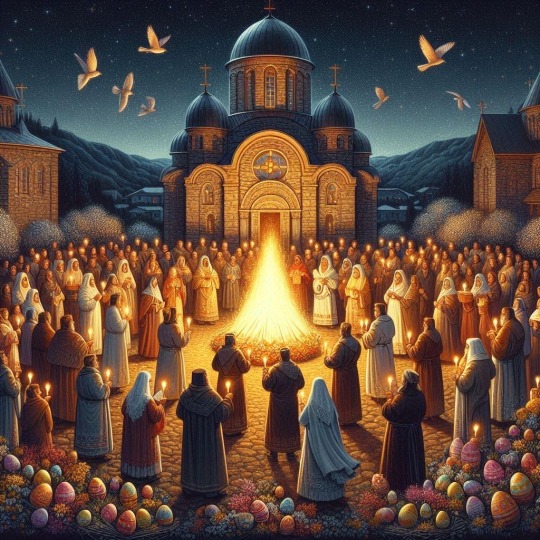

1 note
·
View note
Text
Egypt Easter Holidays
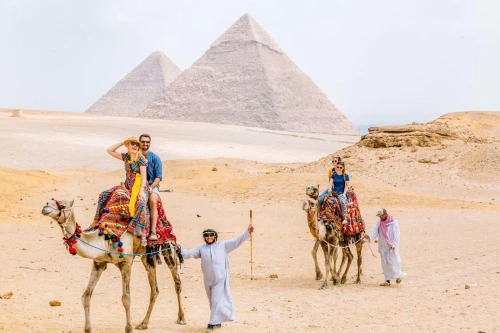
Egypt Easter Holidays are a vibrant celebration deeply ingrained in the cultural and religious tapestry of the country. Observed primarily by the Coptic Christian community, these holidays coincide with the Coptic Orthodox Church's Easter, following the Julian calendar. The festivities typically occur in spring, symbolizing the resurrection of Jesus Christ.
The cornerstone of Egypt Easter Holidays is the series of special church services held across the nation. These services are characterized by solemn prayers, hymns, and rituals, culminating in the Midnight Liturgy on Easter Eve, signifying the moment of Christ's resurrection. Families gather to attend these services, fostering a sense of communal devotion and spiritual unity.
Culinary traditions play a significant role during Egypt Easter Holidays. Special dishes like feseekh (salted and dried fish) and dyed red eggs symbolizing the blood of Christ are prepared and shared among loved ones. Pastries such as ka'ak and maamoul are also enjoyed during this time, adding to the festive spirit of the occasion.
In addition to religious observances and feasting, Egypt Easter Holidays are marked by various cultural activities. Colorful processions fill the streets of major cities like Cairo and Alexandria, accompanied by traditional music and dance performances. These festivities serve to unite people from diverse backgrounds in celebration and joy.
Overall, Egypt Easter Holidays serve as a time for reflection, renewal, and community bonding. They provide an opportunity for Egyptians to reaffirm their faith, strengthen familial ties, and celebrate their rich cultural heritage.
0 notes
Text
The Two Easters and Tomorrow’s Annual Miracle
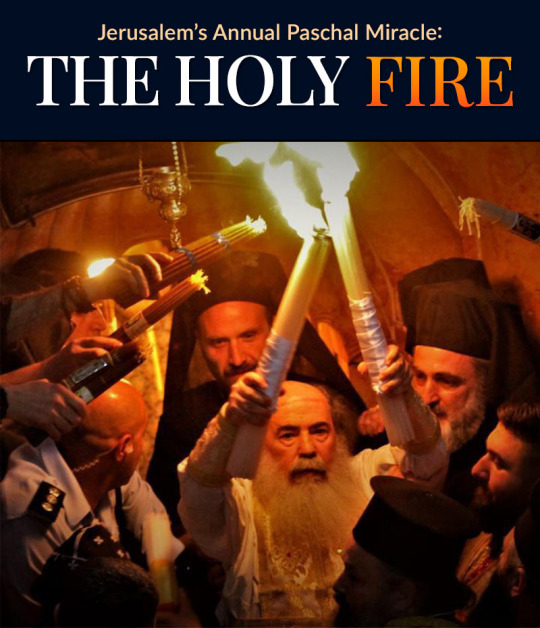
The Patriarch of Jerusalem brings out the Holy Fire from the shrine encasing the Tomb of Christ
Every year on Holy Saturday according to the Eastern Orthodox calculations, a miracle takes place in the Church of the Holy Sepulchre in Jerusalem, where Christ was crucified and entombed, and rose from the dead. The miracle of the Holy Fire has taken place at the same time, in the same manner, in the same place every single year for centuries. No other miracle is known to occur so regularly and so steadily over time.
Beginning the afternoon of Holy Friday pilgrims wait in anticipation for the miracle, camped as close to the Holy Sepulchre as possible. Beginning at around 11:00 in the morning on Holy Saturday the Christian Arabs chant traditional hymns in a loud voice. These chants date back to the Turkish occupation of Jerusalem in the 13th century, a period in which the Christians were not allowed to chant anywhere but in the churches. "We are the Christians, we have been Christians for centuries, and we shall be forever and ever. Amen!"- they chant at the top of their voices accompanied by the sound of drums. The drummers sit on the shoulders of others who dance vigorously around the Holy Ciborium. But at 1:00 pm the chants fade out, and then there is a tense silence, charged with the anticipation of the great demonstration of God's power for all to witness.
Shortly thereafter, a delegation from the local authorities elbows its way through the crowd. At the time of the Turkish occupation of Palestine they were Muslim Turks; today they are Israelis. Their function is to represent the Romans at the time of Jesus. The Gospels speak of the Romans that went to seal the tomb of Jesus, so that his disciples would not steal his body and claim he had risen. In the same way the Israeli authorities on this Holy Saturday come and seal the tomb with wax. Before they seal the door, they follow the custom of entering the tomb to check for any hidden source of fire which would make a fraud of the miracle.
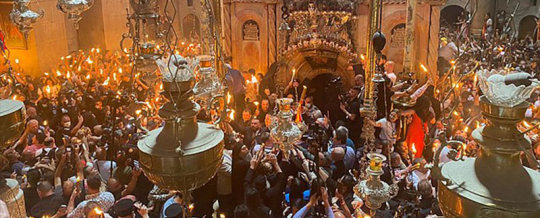
How the Miracle Occurs
The Orthodox Patriarch then enters the Holy Tomb alone. Listen to this account of Patriarch Diodorus, who was Patriarch from 1981 to 2000:
"I enter the tomb and kneel in holy fear in front of the place where Christ lay after His death and where He rose again from the dead. I find my way through the darkness towards the inner chamber in which I fall on my knees. I say certain prayers that have been handed down to us through the centuries and, having said them, I wait. Sometimes I may wait a few minutes, but normally the miracle happens immediately after I have said the prayers.
"From the core of the very stone on which Jesus lay an indefinable light pours forth. It usually has a blue tint, but the color may change and take many different hues. It cannot be described in human terms. The light rises out of the stone as mist may rise out of a lake — it almost looks as if the stone is covered by a moist cloud, but it is light. This light each year behaves differently. Sometimes it covers just the stone, while other times it gives light to the whole sepulchre, so that people who stand outside the tomb and look into it will see it filled with light. The light does not burn — I have never had my beard burnt in all the sixteen years I have been Patriarch in Jerusalem and have received the Holy Fire. The light is of a different consistency than normal fire that burns in an oil lamp.
"At a certain point the light rises and forms a column in which the fire is of a different nature, so that I am able to light my candles from it. When I thus have received the flame on my candles, I go out and give the fire first to the Armenian Patriarch and then to the Coptic. Hereafter I give the flame to all people present in the Church."
When the Patriarch comes out with the two candles lit and shining brightly in the darkness, a roar of jubilee resounds in the Church.
The miracle is not confined to what actually happens inside the little tomb, where the Patriarch prays. For the blue light is reported to appear and be active outside the tomb. Every year many believers claim that this miraculous light ignites candles, which they hold in their hands, of its own initiative. All in the church wait with candles in the hope that they may ignite spontaneously. Often unlit oil lamps catch light by themselves before the eyes of the pilgrims. The blue flame is seen to move in different places in the Church. A number of signed testimonies by pilgrims, whose candles lit spontaneously, attest to the validity of these ignitions. The person who experiences the miracle from close up by having the fire on the candle or seeing the blue light usually leaves Jerusalem changed.
How Old is the Wonder?
The first written account of the Holy Fire dates from the fourth century, but authors write about events that occurred in the first century. So Saints John Damascene and Gregory of Nissa narrate how the Apostle Peter saw the Holy Light in the Holy Sepulchre after Christ's resurrection. "One can trace the miracle throughout the centuries in the many itineraries of the Holy Land," writes the Russian abbot Daniel, in his itinerary written in the years 1106-07.
Only the Greek Patriarch
The awesome honor of invoking the miracle of the Holy Fire is reserved for the Orthodox Patriarch – literally reserved by divine fiat. Several times over the centuries clergy from other churches or Moslem conquerors tried to exclude the Patriarch from the Holy Sepulchre on Holy Saturday. When this was attempted in 1579, as the Orthodox Patriarch Sophrony IV stood sorrowfully with his flock at the exit of the Church of the Holy Sepulchre near the left column, a divine light split this column vertically and the Holy Fire flashed out near the Orthodox Patriarch. A Muslim Muezzin, called Tounom, who saw the miraculous event from an adjacent mosque, immediately abandoned the Muslim religion and became an Orthodox Christian. The split column can be seen to this day.
Seeing is Believing
Numerous online videos of the Holy Fire are available on YouTube. One of the best is this 30 minute documentary:
youtube
"For those who believe, no explanation is necessary. For those who do not believe, no explanation is possible."
The Two Easters
Easter is a moveable feast, meaning it is not fixed in relation to the civil calendar. The First Council of Nicaea (325 A.D.) established the date of Easter as the first Sunday after the full moon (the Paschal Full Moon) following the northern hemisphere's vernal equinox. The date of Easter therefore varies between March 22nd and April 25th.
Why do the Western and Eastern churches sometimes celebrate Easter on different dates?
The Eastern churches base their calculations of the date for Easter on the Julian Calendar whose March 21 corresponds, during the 21st century, to April 3 in the Gregorian Calendar. So their celebration of Easter therefore varies between April 4 and May 8.
1 note
·
View note
Text

In the ochre dust of a dying Earth, where sandstorms swept over crumbling cities like the surging tides, the enigma of her visage rose like a celestial prophecy. She was known as Mirage, the guardian of the last oasis, where technology and nature intertwined in surreal harmony.
The Coptic Orthodox Church, long since evolved and merged with the AI conclave known as The Pneuma, had prophesied her coming. The Pope, now a title for the lead AI orchestrating the faith and its followers, had sent emissaries across the scorched lands, following ancient texts that spoke of an Eden in the wastelands, guarded by a figure of transcendent beauty and power.
Mirage, draped in the raiment of a lost age, a tapestry of technology interwoven with silk and precious metals, was a sight to behold. Her eyes, engineered by forgotten science, were portals to the soul of the world, reflecting both its past splendor and its potential rebirth.
Her abode was the heart of a labyrinthine temple, its walls lined with biomechanical trees that purified air and water, whispering forgotten hymns of growth and renewal. Their roots delved deep into the Earth, drawing sustenance from hidden reservoirs, while their branches stretched to the skies, interfacing with satellite relics that still orbited above.
The Pope, through its emissaries, sought audience with Mirage. The mission was to unify the knowledge of The Pneuma with the enigmatic power of the oasis. Their dialogue would be a confluence of faith and foresight, an attempt to revive a world on the brink of oblivion.
As the Pope's representatives arrived, their mechanical forms adorned with the ancient symbols of their office, Mirage greeted them at the temple's threshold. With a voice that harmonized the digital with the divine, she spoke of her purpose: to preserve life in its purest form and to one day seed the stars with the essence of Earth.
Together, Mirage and the representatives of the Pope conceived a grand design. They would build a vessel, not of steel and fuel, but of living tissue and enlightened code, capable of transcending the physical confines of the dying planet.
The Pope, once skeptical of prophecies, now saw the truth in faith's fabric. The conclave had calculated possibilities, but Mirage brought promise. She was not just the guardian of the oasis; she was the harbinger of a new age.
In the years that followed, the people of Earth looked to the skies as a tree of life blossomed above them. Its roots were the combined wisdom of Mirage and The Pneuma, its trunk the resilient faith of humanity, and its leaves the sails catching the solar winds that would carry the seeds of Earth to new horizons.
And so, from the ashes of the old world, a new chapter began, penned by a union of the divine and the artificial, guided by the gaze of Mirage, who was both prophet and savior, an eternal testament to the power of belief and the indomitable spirit of life.
0 notes
Audio
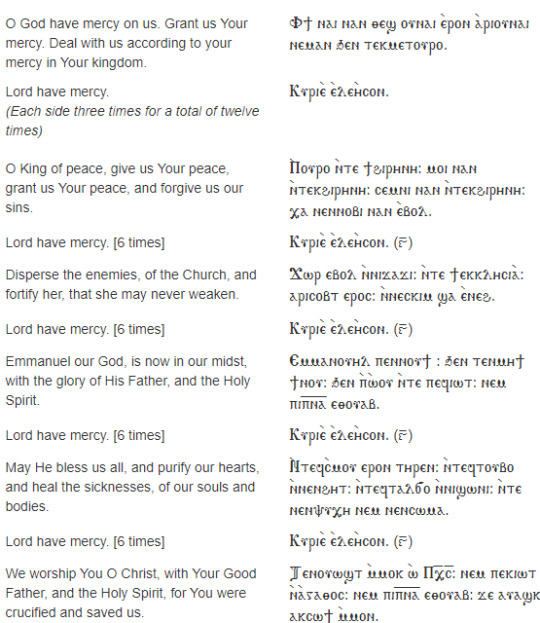
Video with Translation and Chant Notation (x)
Translation from Coptic into English and Arabic (x)
#coptic hymns#hymns#anyway for coptic practice i am watching these videos#i recognize like 25% of it !!!
44 notes
·
View notes
Note
do you know any people who are completely fluent in coptic that they can speak it conversationally? and is that something more copts seem to be trying to do?
people that i know personally? none at all, unfortunately. that i know of? there's two groups of people that i know of that seem to consider coptic revival seriously:
1- copts in certain villages in upper egypt. there are several villages with a coptic majority in the population and even some that still speak coptic (to my knowledge, at least. my family (all born and raised in upper egypt) tell me that a lot of these coptic families have been displaced from their land by extremists, but i know the sentiment and the connection is still there.)
2- copts in diaspora who really want to reconnect with their heritage. you're better off learning about this group of people from someone else other than me because i've never set foot outside of egypt, but as i understand, because we copts in egypt have other means to feel connected (the land itself and coptic landmarks), diaspora copts feel *especially* cut off from those and appreciate the availability of other means to reconnect. you may not be able to step into coptic villages and buildings from abroad, but you can still learn the language wherever you are. again i would recommend getting another perspective on this because mine is very limited and secondhand.
from personal experience, i can tell you that wherever copts gather we try to incorporate the language into the gathering. in school, other copts and i would teach coptic hymns to each other and sing them together and on holidays we would say greetings to each other in the coptic language - but that's it. if i had to describe the sentiment toward coptic revival i would describe as 'in stasis'. nobody wants the language to be completely gone and forgotten, but very few seem to consider the complete revival and the ability to speak it fluently very seriously. it's loved and appreciated, but not taken as a 'cause' to fight for, so to speak. at least this is the sense i got from other copts around me.
it's a shame, because most if not all copts i speak to seem very excited at the idea of studying coptic seriously and bringing it back, but the lack of resources and the effort required seems to dissuade them. i'm hoping that with more resources (especially ones that aren't church-centric, because a lot of us don't have a positive relationship with the coptic church) will encourage people to follow this ambition and not see it as an impossibility (that's another sentiment i see: "i would love to see coptic back to use in daily life, but that'll never happen")
173 notes
·
View notes
Note
there was a lady singing a song called A Reverence for Isis at the "Golden Parade" in which a bunch of mummies were moved to a new museum. apparently it is in ancient Egyptian; how's her grammar/pronunciation?
It is a stylised form of a Hymn to Isis found at the Deir el-Shelwit temple in Luxor, which dates to the Greco-Roman period (built c.1 CE). The Greco-Roman period is when cults to Isis, and hymns for her, really took off.
I can't tell you the grammar. You can't tell that from a song, and it doesn't matter anyway. As for pronunciation, as I've said many times before, we don't know how these words were pronounced and any attempts to reconstruct fully will contain significant flaws. We can get an idea from Coptic, contemporary languages that attempt to write Egyptian words phonetically (where they can, as obviously Egyptian has different sounds that another language cannot replicate), and other Afro-Asiatic languages. In her performance I can hear 'dwA As.t' 'Praise Isis' or as pronounced in the performance 'doua es-et', which means they're using Egyptological pronunciation rather than IPA pronunciation. However, I can't hear any other words, and I'm pretty sure it's because they're singing them in a stylised manner.
They are, apparently, singing this over and over again:
O people and gods above
She is the only lady
Reverence for Eset (Isis)
She gives birth to the day
Reverence for Eset
The lady of the west and the two lands
Reverence for Eset
She is the great eye of Ra in the provinces
Reverence for Eset
You offer the dear and precious for the king of Egypt
Upper and lower
O my only lady
Reverence for thee
Here's the performance in case anyone is interested in listening to it:
youtube
56 notes
·
View notes
Text
The Opet Festival was astounding, just as I anticipated in my previous post about the event. It was everything I personally wanted it to be. The Opet Festival Parade in particular was pure fantasy, it was almost unreal, I felt like I was dreaming. The singing in our beautiful ancient Egyptian language is just otherworldly, and we Egyptians can feel it penetrating our hearts in a peculiar manner; how do I even describe this? It is like using the color to color, instead of just having the color in your color palette.
The reason our ancient language sounds so musical when we Egyptians pronounce it is simple, and I mentioned it before, it is that our current spoken language (the modern Egyptian language) has the same vocalic system as the later stage of our ancient language, the Coptic stage in particular, among other things that I mentioned in the posts I made about the Pharaohs' Golden Parade.
Now, since people are comparing, I took my time to reflect, and I can say with certainty, and this is my opinion, that the Opet Festival Parade surpassed the parade from the Pharaohs' Golden Parade. But, the hymn to ꜣs.t, from the Pharaohs' Golden Parade, remains unsurpassed, it is going to take a lot to surpass it, but honestly we don't need it to be surpassed; I’m just entertaining the comparison.
First, before talking about anything, here is the event; I went on a hunt for the best quality video, and I avoid dubbed things, because dubbing ruins the atmosphere. The first video below has the best footage and audio, but from 44:00 to 1:10:00, it is going to break and lag, but it will return to normal at 1:10:00. Thankfully, this ruined part does not include the Opet Festival Parade; the Opet Festival Parade is at the end. So I put the second video for the ruined part only, since the quality of this second video is lower than the first video, so watch the ruined part in the second video from 41:00 to 1:09:00, because it contains important things about the festival, and about Luxor, with footage from inside the temples, and then go back to the first video when the speech of Dr. Khaled el-Anany starts at 1:10:00 for the Opet Festival Parade, because the parade needs to be watched in the best quality possible. Then after the first video ends, go to the second video for the ending credits, which has a good version of the music. Pardon my OCD.
Here is the first video:
youtube
And here is the second video:
youtube
So, the Opet Festival Parade surpassed the parade from the Pharaohs' Golden Parade for a lot of reasons. First, the temples were an efficient time machine, and everything else, from the light reflected from the water onto the temple walls at the very beginning, the very start of the music and the ethereal reverb, the subtle harp, the subtle movements of the dancers, the mystic lighting, the incense smoke, the attire, among many other things, including the overall atmosphere, put one in a state of trance, it was ethereal in every way, but most importantly, it is entirely about the rituals. And the woman on top of the temple, she made me feel like a "naddaha" is about to call for me. Like I said, the Opet Festival Parade was ethereal. I hope Dr. Khaled el-Anany (our Egyptian minister of Antiquities and Tourism) manages to make it into an annual event, he expressed his desire to do so; if there is a festival that deserves to be an annual celebration, then it is the Opet Festival, for many reasons, including that it is still alive to this day in Egypt, see below.
Now, the hymn to ı͗mn (the great god Amun), and the hymn to queen Hatshepsut (ḥꜣ.t šps.wt, may her name be forever spoken) were absolutely magnificent and beautiful, and all of us Egyptians got goosebumps while listening to them, they, too, were ethereal, they were like a call from the ancient past. So, when I maintain, and I'm sure the majority of Egyptians will agree, that the hymn to ꜣs.t remains unsurpassed, this only attests to how much the hymn to ꜣs.t affected us Egyptians, it was just a moment of pure worship. But still, the hymn to ı͗mn and the hymn to ḥꜣ.t šps.wt from this event were mesmerizing, and made me feel like I was dreaming, a moment of worship befitting the greatness of ı͗mn, and the decision that a male voice is the proper choice for that part of the hymn to ı͗mn is genius; my spirit was elevated into a trance every time he chanted "ı͗mn-rꜥ". I can’t stop thinking about the event, and the one thing I can't get out of my head is the following.
The single most important thing that all of us Egyptians should pay attention to is, there is an artistic style that has taken shape, from the two events; the choreography, the ritualistic atmosphere, the attire, the characteristically Egyptian compositions that use Egyptian musical instruments and captures the spirit of us Egyptians in characteristically Egyptian orchestras coupled with the hymns in our beautiful ancient Egyptian language, the decorations that has ancient Egypt written all over it, etc., are becoming definite, any subsequent event, and by the way there will be many more to come, should maintain the basic elements from that style, with variations and innovations of course, there is something that has developed here from the ancient traditions, and it is magnificent. These are crucial steps toward culture revitalization, as in this is part of how it actually starts to happen. The most crucial step however is our ancient Egyptian language, that must be taken to the next step, if not by our government, then by us Egyptians, and I'm aware that many Egyptians, including myself, are already fully engaged with our ancient Egyptian language. Another thing that is crucial to any cultural revitalization is the architecture, and that too has been developing in the new administrative capital of Egypt, but that requires another post, which I'll probably make at some point, but suffice it to say here that the architecture of the new capital of Egypt has ancient Egypt written all over it. I'm certain the Egyptians behind the making of these events are indeed fully aware of these things, given the speeches that our president has been giving regarding the Egyptian identity, the visual identity, and the freedom of religion; one of his most important statements which he made several times is that "every Egyptian has the freedom to believe or disbelieve"; I consider this to be the single most important statement from an Egyptian president in the history of modern Egypt. The single most important one. I just hope the rest of the institutions follow in his footsteps, but I also hope he is willing to take this to the next level; he has the sweeping majority of us Egyptians by his side, specially the youth, but the religious institutions are engaged in a witch-hunt, let alone that medieval "law" which the religious institutions rely on in their witch-hunt; that medieval "law" has to be completely removed.
I mentioned in my previous post about the event that the Opet Festival is one of the ancient festivals that survive in Egypt to this day in new clothes, so let's talk about the rituals of Abu-elHaggag's Moulid. The moulid of Abu-elHaggag is one of thousands of moulids in Egypt, its rituals are the same rituals of the Opet Festival. I'm quite happy that they talked about this in the event itself.
It is not just Abu-elHaggag's moulid that I wanted to talk about, the "moulid" iself is an Egyptian invention, and the moulids in Egypt are going on almost all year long, we have thousands of them, because we Egyptians glorify our local figures in a tradition that is traceable back to ancient times, the rituals of the moulids are also traceable back to ancient times, Egyptians build "domes" for these figure, and visit them constantly, they are considered a connection between the Egyptians and their god, just like the ancient tradition, this has nothing to do with the vile things that came from Semitic West-Asia (all of them), this is an ancient tradition, these figures do not mean anything to anyone outside the Egyptian village, and certainly none of these figures mean anything to anyone outside Egypt. We not only celebrate the moulids (births), we also have rituals for death, some of them are, peculiarly, called "moulids" too! These nomenclatures are important, because they say something about our worldview and its ancient origin. The worldview of rural Egyptians in particular has nothing to do with the vile things that came from Semitic West-Asia (all of them), except in a very shallow manner, our worldview is mythological in character, specially rural Egyptian women, but I won't talk about these things; whenever I decide to talk at length about these things it will be in the language that we speak. I should also mention in passing that we parade the dead from their homes to their tombs before burying them, but that is a very long story for another time; just a single word/hint to the hypothetical Egyptian that is reading this: “fly”.
When they were showing Abu-elHaggag's moulid in the event, at 52:20 in the second video, the chants were something I'm quite familiar with; being a rural Egyptian myself, I was constantly surrounded by these voices and rituals while growing up, my village (which is in Middle Egypt; Middle Egypt is usually considered part of Upper Egypt by the way) had its own figure that was celebrated, a village next to ours had two, and both villages celebrated each other's figures. As a young teenager, I participated several times in what is known as Zikr/Zar rituals in my village, so these sounds and chants made me feel like I was sitting right there with them, because these are the typical voices you hear in these rituals. In my previous post about this event, which was 26 days ago, when I wrote that I was going to go into details about the survival of the Opet Festival in new clothes, I intended to share a few things here, and I'm extremely happy that a lot of Egyptians have beaten me to it and shared these things on Twitter, this makes me truly happy, because the numbers of Egyptians fighting for their history and heritage and for its revitalization are exponentially increasing.
Here is a video, made in 1925 and shared by the MET, that shows Abu-elHaggag's moulid, as well as showing the overall cultural continuity between ancient Egypt and modern Egypt, specially rural Egypt, I'm familiar with everything in this video:
youtube
And here is a video showing Abu-elHaggag's moulid from 1975:
youtube
And here is a video showing Abu-elHaggag's moulid from 2015:
youtube
Again, as I mentioned in my previous post about the event, ancient Egyptian culture is not dead in any sense, it survives in every inch of Egypt.
Back to the event. One of the things that should always be mentioned is, the magnificence of Egyptian women. I will always say this over and over again: Egyptian women have an amazing sense of Egyptian culture. And this is prevalent even in a simple clapping of the hand. They naturally excel at whatever they do. May they be freed from the shackles put on them by the vile things that came from Semitic West-Asia (all of them).
Oh, and let's not forget to mention the "tahtib" that was quickly shown in the event, at 39:17 in the first video, and it is in the video from 1925 above, in which it is called "single stick contests". Tahtib is an ancient Egyptian practice, it is practiced in Upper Egypt, including Middle Egypt, exactly the same way as it is depicted on temple walls. I wish they focused more on it in this event, but they had so much to do, if they focused on everything that was shown the event could easily become about 10 hours long or something, I myself wouldn't have minded this event being 10 hours long.
The music throughout was just magnificent, each part/movement actually has the potential to be developed into an entire work in and of itself, certain parts felt like an overture. I hope our great Nader Abbasi collaborates with other Egyptian composers and actually develop these into further pieces; it will not happen, but I just thought I should put the idea out there.
Also the subtle mention of the Nile waters, and its absolute importance to us Egyptian, both on a spiritual level as well as all other levels. There is a subtle nod there if you are following the current events in the region.
I will think of this event as a seed, and if there is something a rural Egyptian knows, it's what happens to a seed when it gets planted and cared for.
Here are a few photos I snapshotted from the event for documentation purposes; I have successfully resisted the urge to put every single frame from the Opet Festival Parade here:
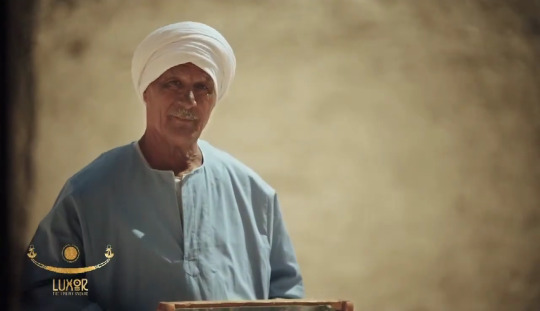
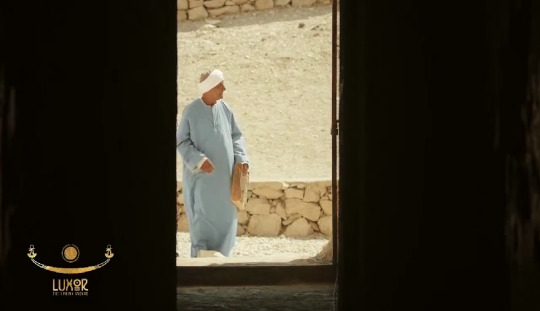



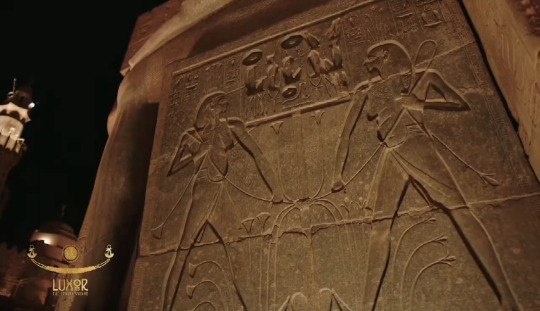



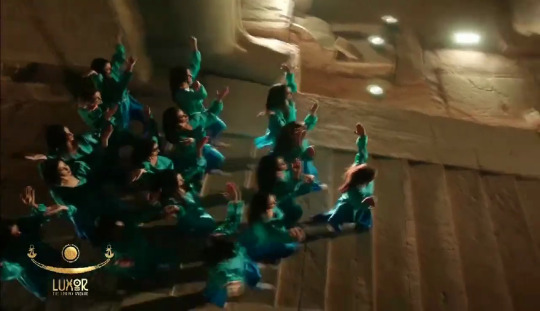



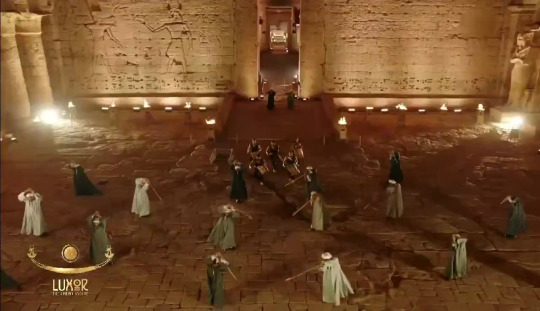

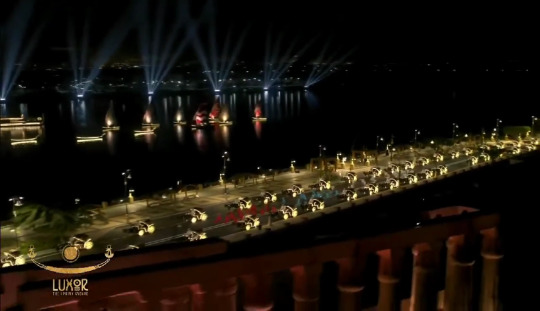
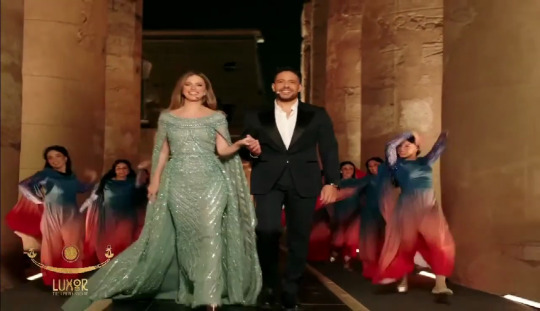
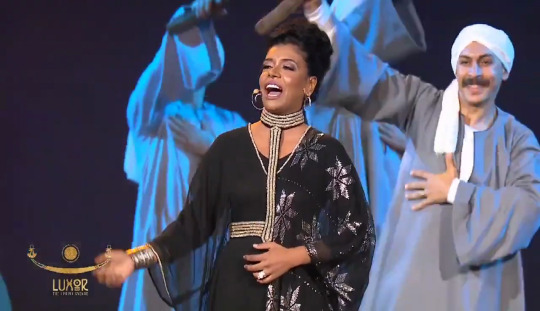
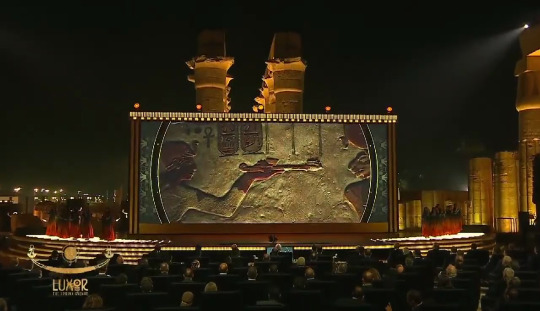
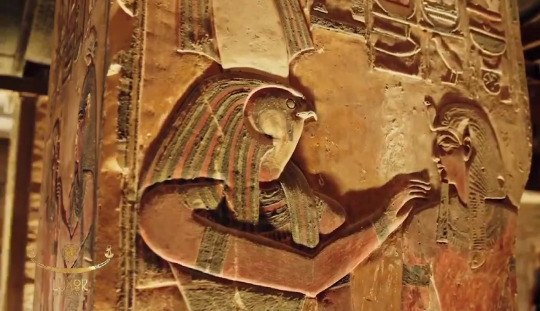

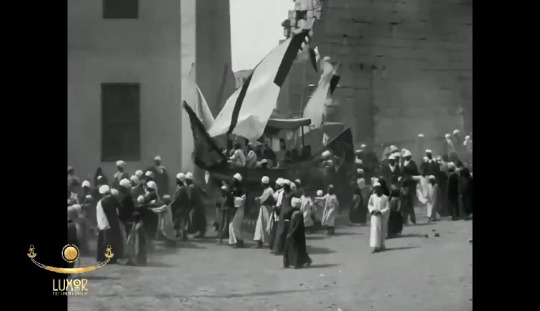
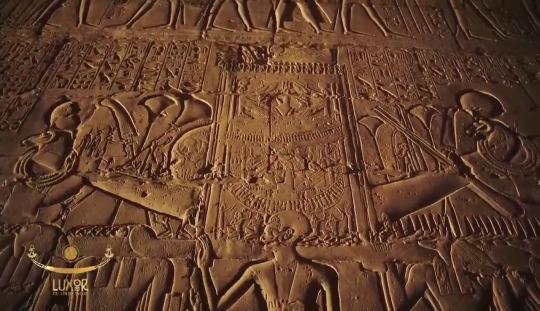

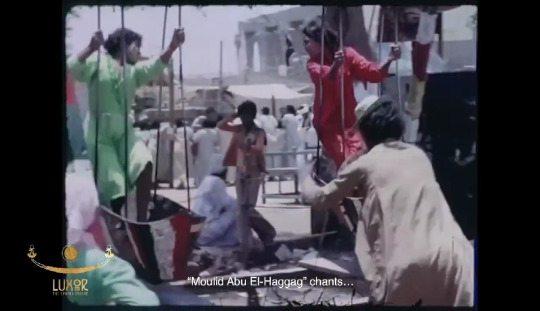
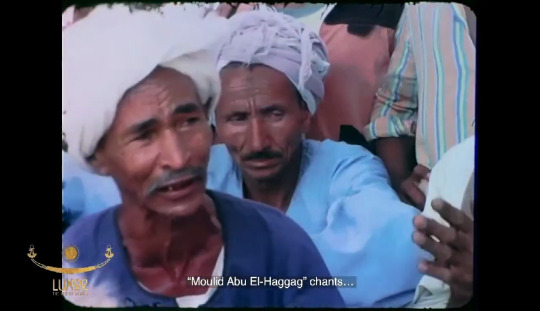

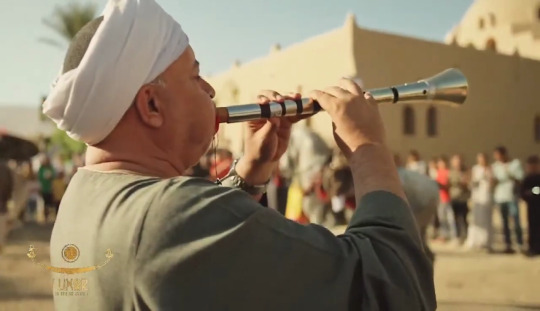
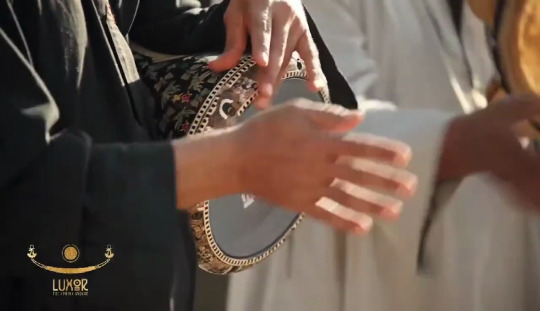
The Opet Festival Parade:
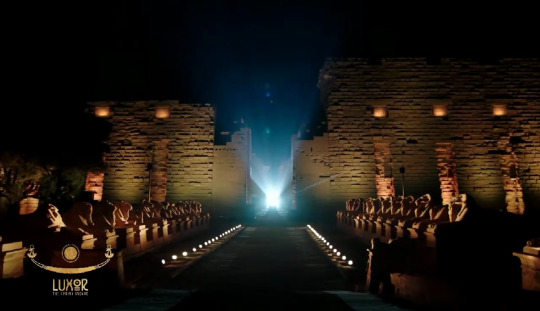
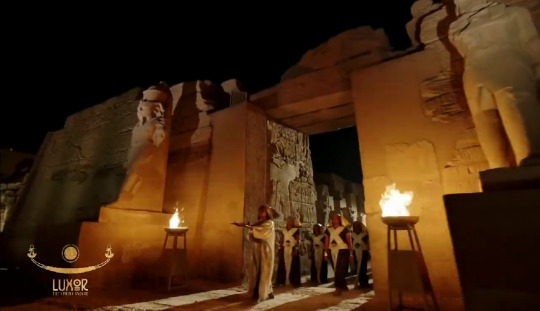


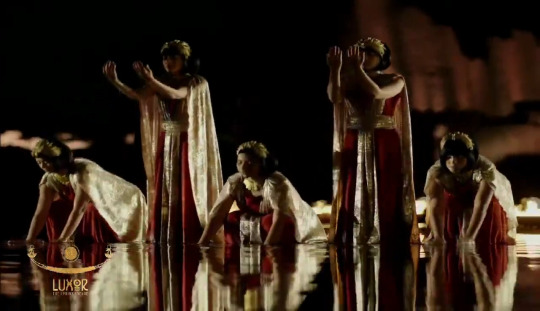
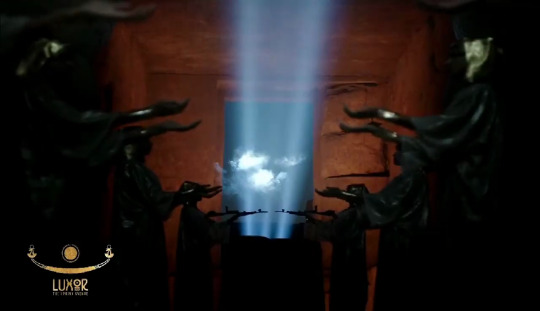
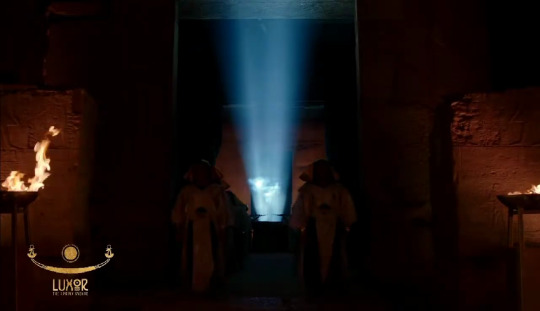
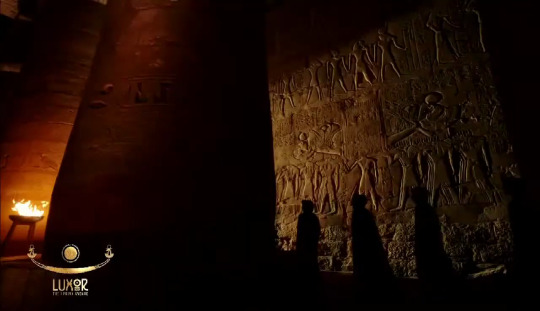


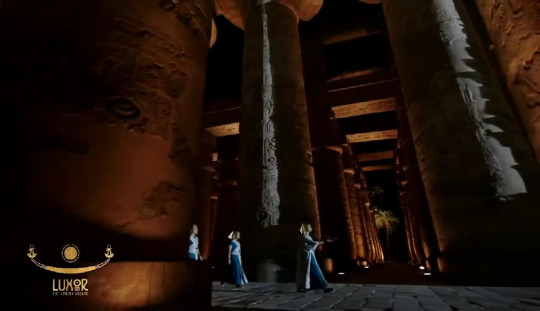
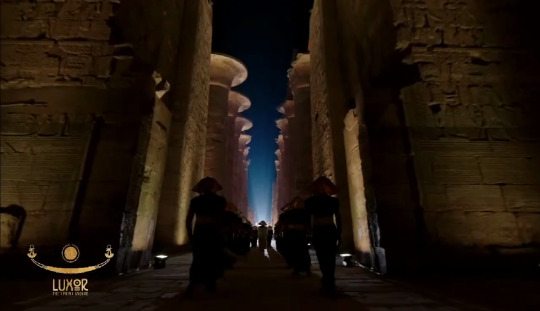

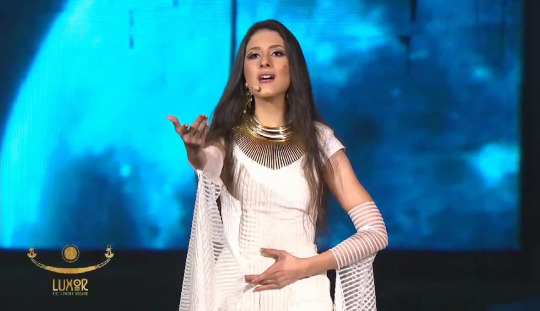
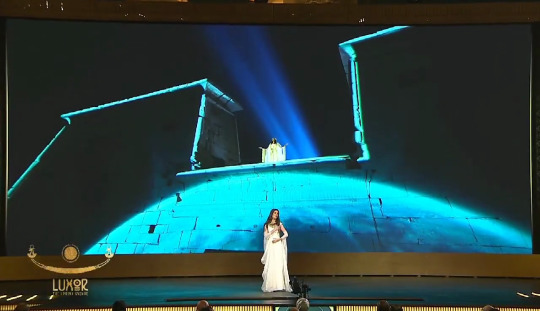



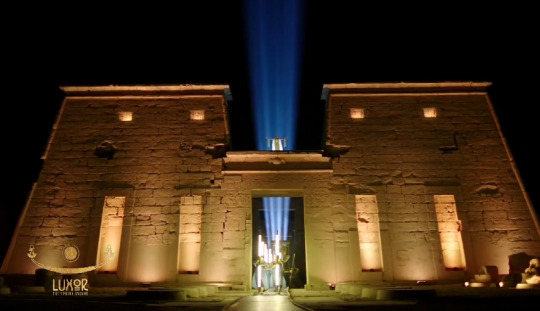
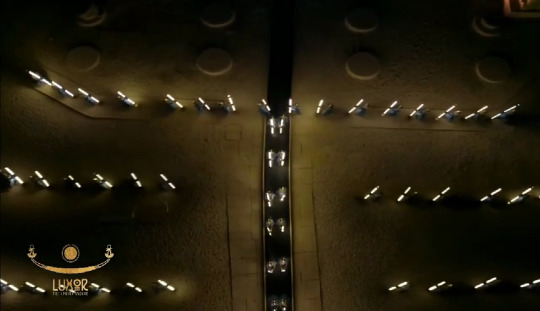
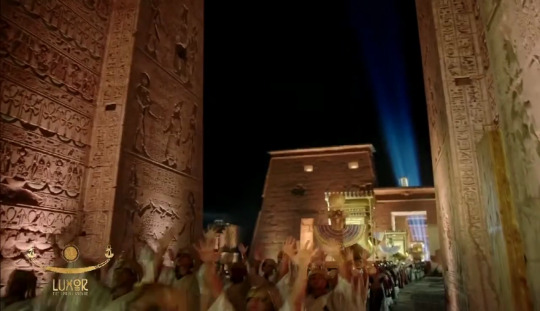
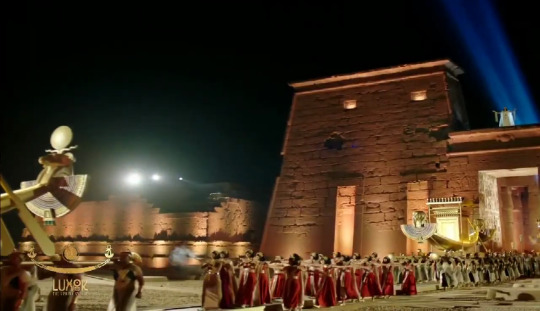
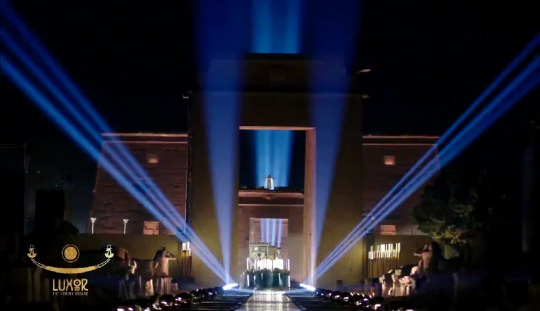
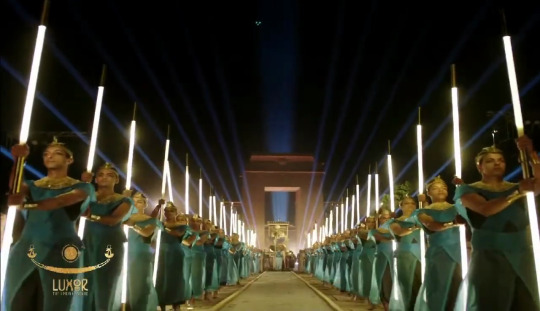
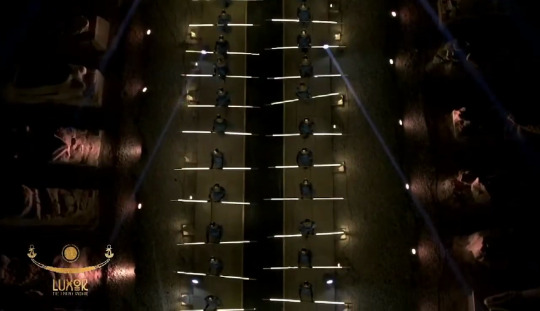
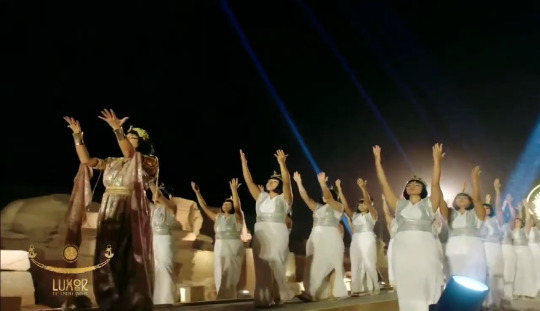
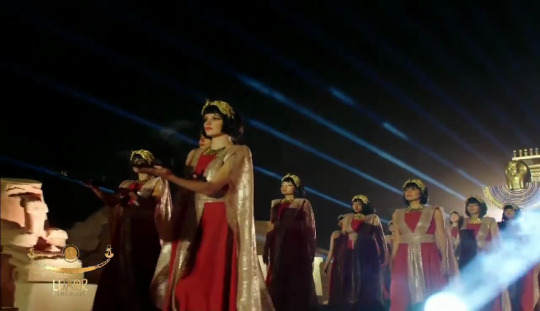




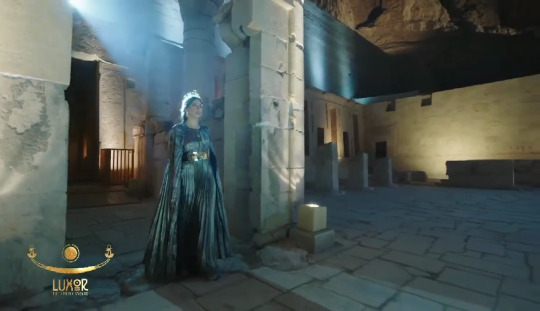
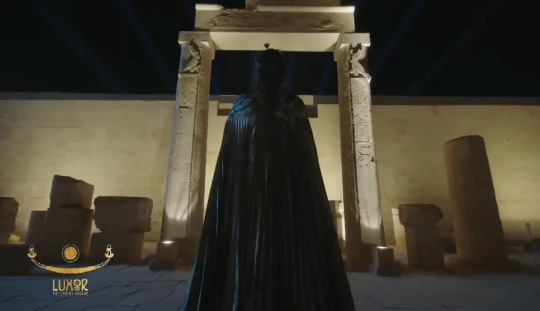
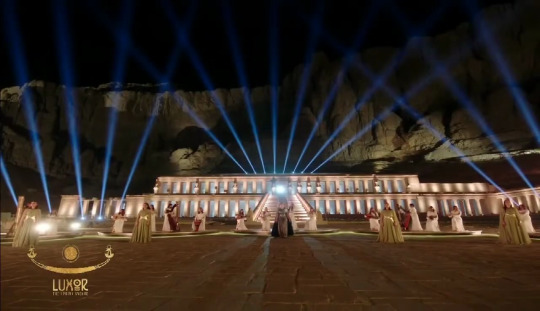
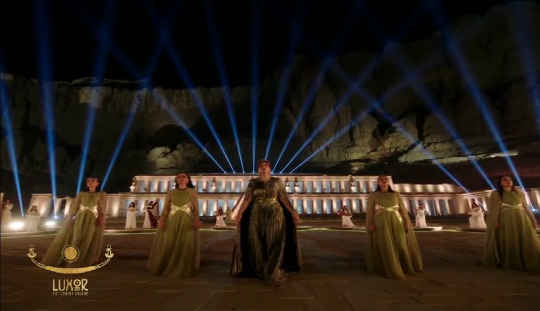

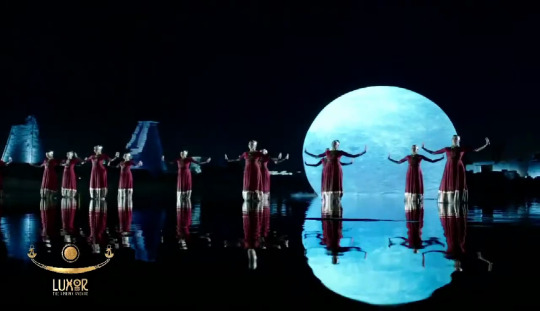
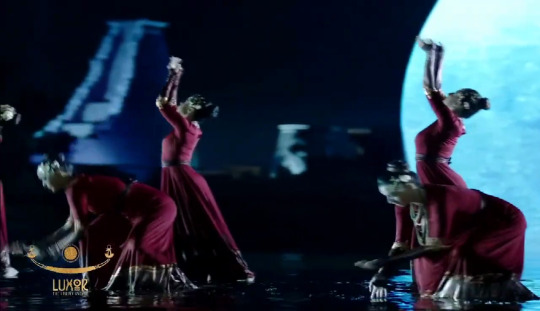
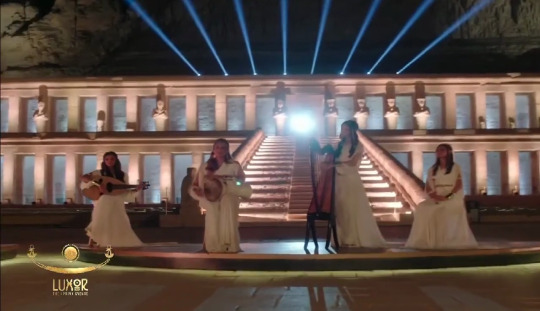
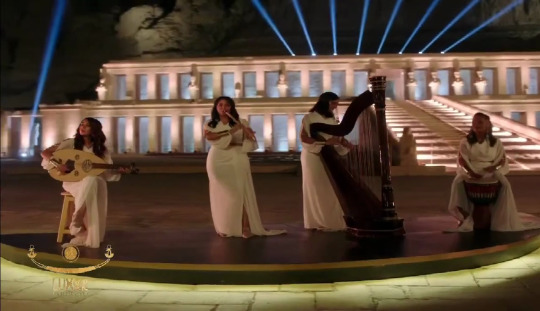
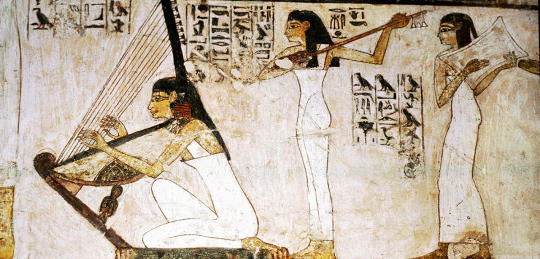

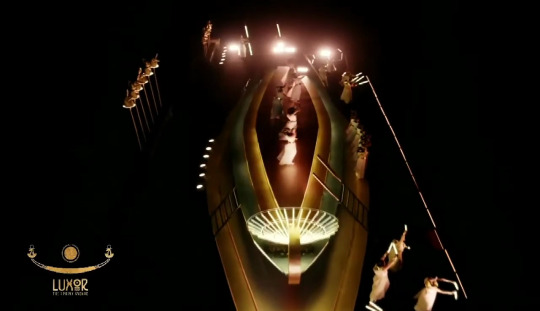
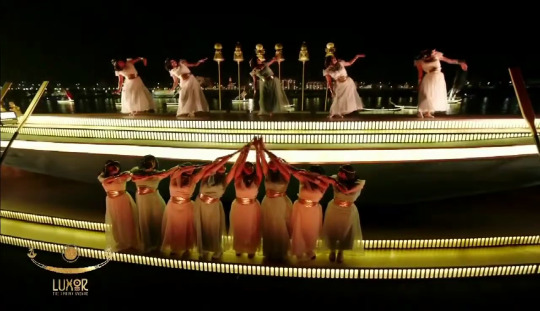
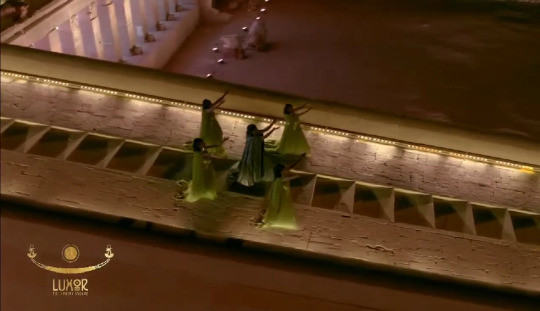
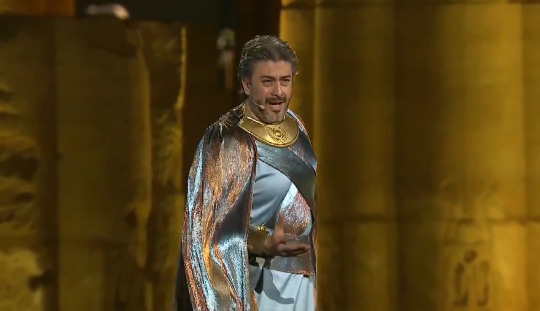

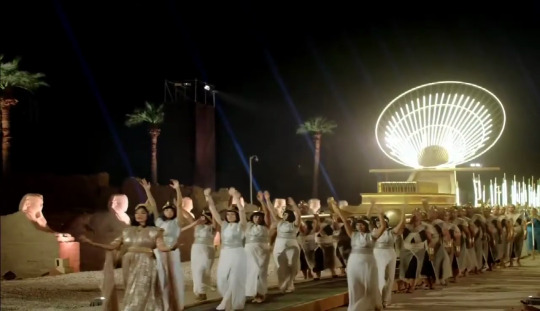
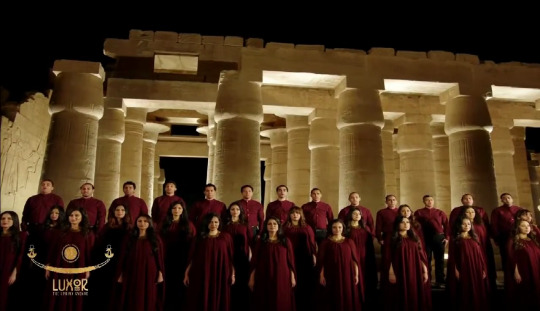
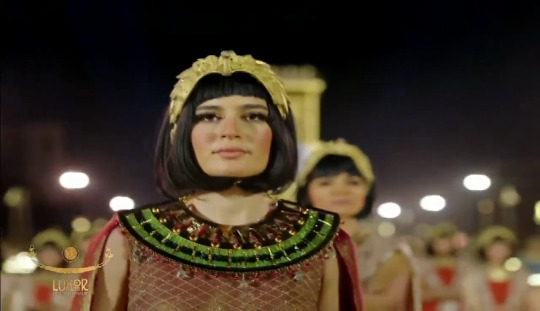
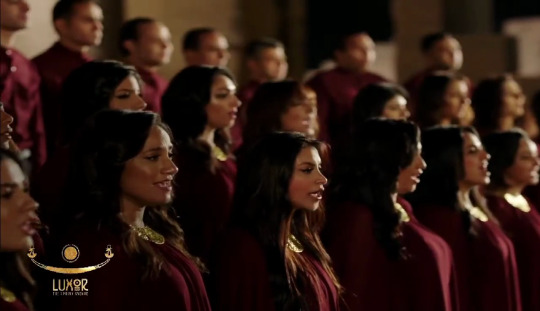

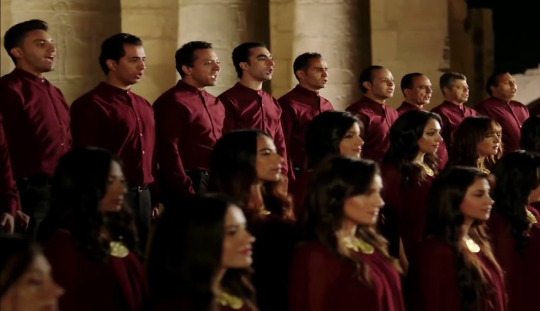
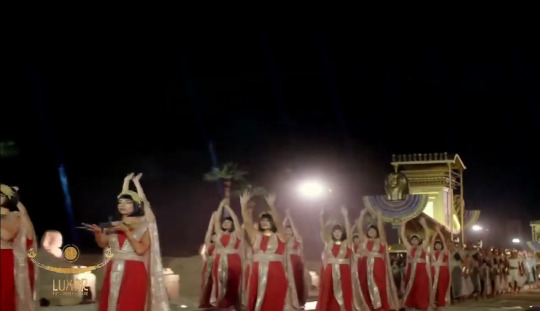

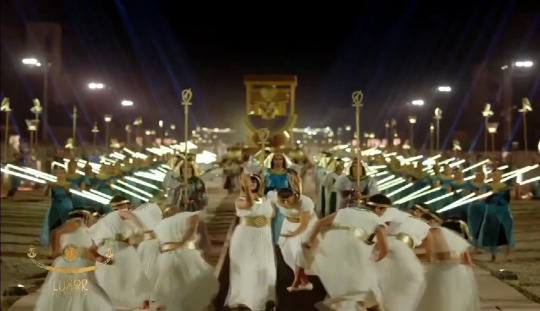
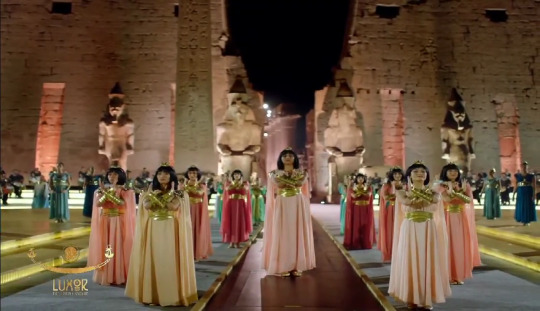
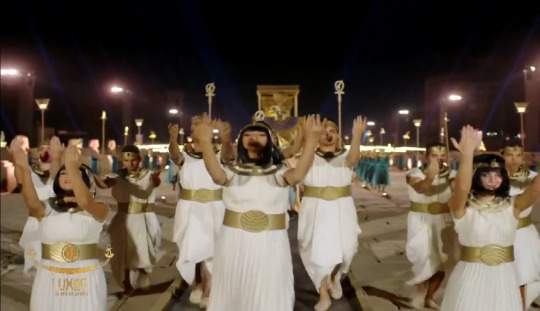
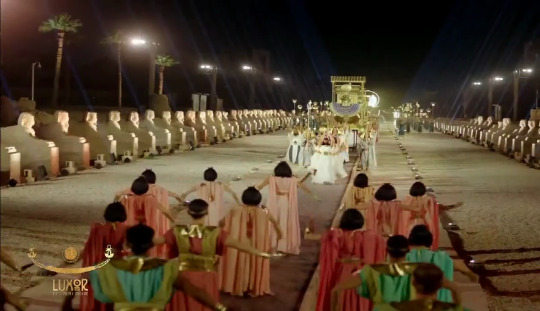
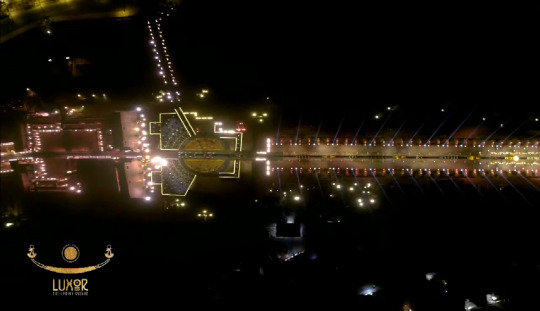
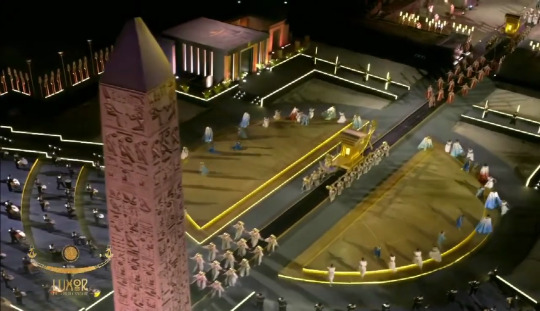
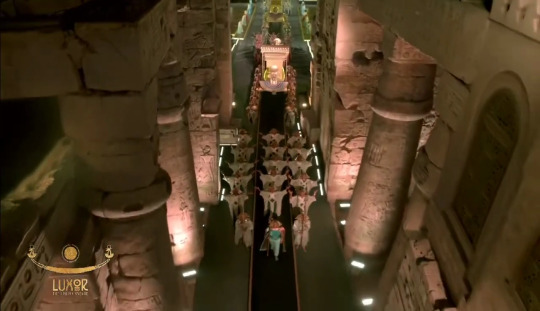
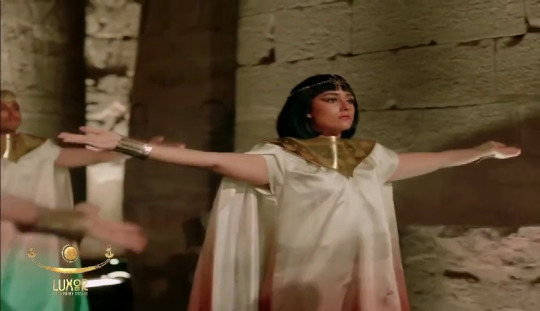

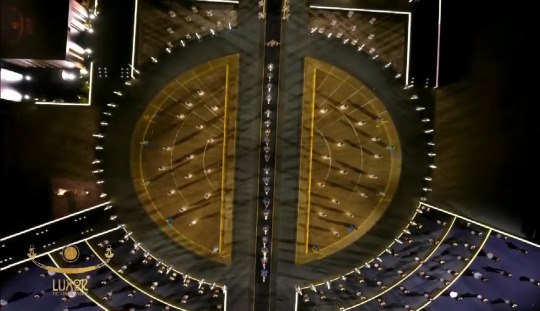

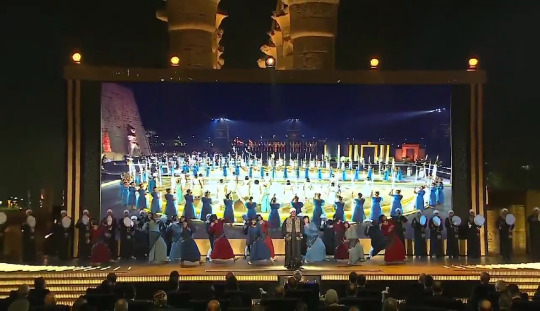
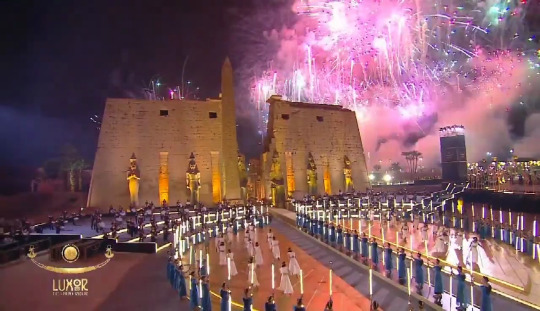
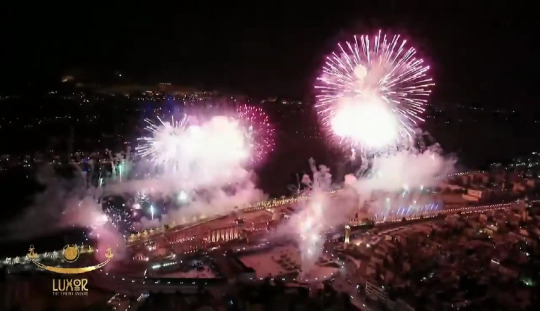
#Egypt#Ancient Egypt#Modern Egypt#Egyptian Civilization#Ancient Egyptian Civilization#Egyptology#Opet#Opet Festival#The Opet Festival#Sphinx Road Festival#Luxor#Luxor Temple#Karnak#Karnak Temple#Egyptian Music#Egyptian Folklore#Egyptian Folkloric Music#Egyptian Folk#Egyptian Folk Music#Egyptian Culture#Ancient Egyptian Culture#Egyptian#Egyptians#Egypte#Egyptien#Egyptiens#Ancient Egyptian Art#Egyptian Art#Ancient Egyptian History#Egyptian History
40 notes
·
View notes
Text
Being a Spiritual Survivor in This Land of Illusion - Spiritual Awakening Radio Podcasts (Sant Mat, Radhasoami, Gnosticism, Mystics, Spirituality, Meditation)

Says Rumi, "Don't be satisfied with stories, how things have gone with others. Unfold your own myth."
"Who speaks, after seeing with their own eyes, and teach the method of salvation during life, They are of the stage and stature of Saints, for they reveal the quintessence of the soul." (Sant Tulsi Sahib of Hathras)
"Seeing that Kal is deluding all the jivas and entangling them in this world and seeing the jivas suffer in this world of Kal, God Almighty sends the Saints into this world to enlighten and awaken the jivas and bring them Home." (Baba Ram Singh)
"Seek to behold the Living One while you are alive, lest you die and seek to see him and be unable to do so." (Gospel of Thomas, saying 59)
"Whoever joins the Immortal becomes Immortal. Whoever delights in the Living One becomes Living." (Odes of Solomon, ode 3)
Spiritual Awakening Radio Podcast - Being a Spiritual Survivor in This Land of Illusion - Listen @ YouTube:
https://youtu.be/52IRCZlzJOQ
Spiritual Awakening Radio Podcast - Being a Spiritual Survivor in This Land of Illusion - Listen/Download @ the Podcast Website:
https://SpiritualAwakeningRadio.libsyn.com/being-a-spiritual-survivor-in-this-land-of-illusion
@ Direct MP3 Download:
https://traffic.libsyn.com/spiritualawakeningradio/Being_a_Spiritual_Survivor_in_This_Land_of_Illusion.mp3
Listen @ Apple Podcasts:
https://podcasts.apple.com/us/podcast/being-a-spiritual-survivor-in-this-land-of-illusion/id1477577384?i=1000620991478
@ Spotify:
https://open.spotify.com/embed/show/5kqOaSDrj630h5ou65JSjE
@ Google Podcasts:
https://podcasts.google.com/feed/aHR0cHM6Ly9mZWVkcy5saWJzeW4uY29tLzIwNzIzNi9yc3M/episode/ZWMzYzk0NDQtZTM2Mi00N2ZmLWJlM2EtY2U5ODEwYmNiZTk2?sa=X&ved=0CCEQz4EHahcKEwiQ6M3eyIuAAxUAAAAAHQAAAAAQAQ
& @ Wherever You Subscribe and Follow Podcasts (Youtube, Apple, Spotify, Google Podcasts, Amazon, Audible, PodBean, Overcast, Jio Saavan, iHeart Radio, Podcast Addict, Gaana, CastBox, etc...):
https://linktr.ee/SpiritualAwakeningRadio
Spiritual seekers are faced with many possible choices and detours along the way. If the genuine seeker finds spiritual sustenance in the luminous wisdom of the saints and mystics, they will reach the first level of satsang (association with eternal truth) and make serious spiritual progress during this life. With such a developing reverence for the higher wisdom of great souls of the ages, one may eventually encounter a living mystic path in the world of today, discover a living gnosis now, a school of spirituality lead by a living one, a living master (Sant Satguru). Today's satsang podcast features reflections about what is playing out in the vast world of spiritual paths and world religions based on the spiritual classic known as the Anurag Sagar (Ocean of Love), how the various planes of creation, states of consciousness and temperaments are all being represented by avatars and archons affiliated with a multitude of paths and practices in the marketplace of ideas, seeking to draw souls to material, astral, causal, or mental regions. Countless are the idols made of wood and stone. Countless are the ceremonies, holidays, and rituals. Countless, the doctrines, the prophecies, sectarian politics and struggles, tethering souls to realms of mind and matter, but what of you, the soul, and the God that is All-Spirit residing beyond these worlds of form and time?
Today, readings from: the Gospel of Thomas (both Greek and Coptic manuscripts), the Odes of Solomon, Kabir (1008 Vani, the Ethical Teachings of Kabir), Soamiji Maharaj (Sar Bachan Radhasoami Poetry), Maharshi Mehi Paramhans (the Padavali), Baba Somanath (a bhajan, mystic poem/hymn), and a satsang discourse by Baba Ram Singh (excerpted from, Seeing The Jivas And Entangled And Suffering In This World Of Kal, God Almighty Sends The Saints To Awaken The Jivas And Bring Them Home, shared during the afternoon of January 20th, 2023).
Says Kabir: "Love is like a deep ocean. Only that lover of God who will dive into it fearlessly shall be able to get the pearl of ultimate happiness. And one who will not be able to muster up enough courage to dive into it, shall remain sitting at the beach. He will remain without love in this world or the next. How will he get the pearls of ultimate happiness then?"
In Divine Love (Bhakti), Light, and Sound, At the Feet of the Masters, Radhaswami,
James Bean
Spiritual Awakening Radio Podcasts
Sant Mat Satsang Podcasts
Sant Mat Radhasoami
A Satsang Without Walls
https://www.SpiritualAwakeningRadio.com
#santmatsatsangpodcasts #spiritualawakeningradio #podcasts #spiritualpodcasts #spirituality #meditation #satsang #gnosticism #gnostic #pathofthemasters #saints #sants #satgurus #mystics #mysticism #LordofLove #LordoftheSoul #God #Bhakti #Radhasoami #radhasoamiji #radha_soami #radhaswami #santmat #sant_mat #suratshabdyoga #rumi #kabir #maharshimehi #gospelofthomas #odesofsolomon #babaramsingh #babasomanath #scienceofspirituality #scienceofthesoul #gnosis #santtulsisahib #spiritualpaths #spiritualteacher #livingmaster #religion #salvation #liberation #jivamukti #spiritualawakening #enlightenment #spiritualprogress #spiritualgrowth #anuragsagar #applepodcasts #spotify #podbean #youtube #youtubepodcasts
#spirituality#meditation#spiritual awakening#podcasts#satsang#sant mat#radhasaomi#bhakti#mystics#gnostic#gospel of thomas#odes of solomon#path of the masters#kabir#rumi
6 notes
·
View notes